Avatar: Frontiers of Pandora review – a faithful recreation that enhances the franchise
Avatar: Frontiers of Pandora is finally here and fans of the franchise can finally explore Pandora in a vibrant interactive setting. However, does Ubisoft’s newest game come together as a faithful adaption or is it beholden to the tropes of the publisher?
Alien: Isolation is a special game. While not beloved by everyone, and it faced some harsh reviews when it launched, it’s one of those rare cult classic games that has stood the test of time. The people who love Creative Assembly’s game love it.
The thing that makes that game work, and what has allowed it to have such a long tail, no pun intended, is no everyday occurrence. It’s a video game based on an existing IP that does nothing to disrespect the source material, but rather so deeply understands the work it’s based on that it does the rarest of things – it adds to the franchise.
It should be obvious why I’m bringing this up at the beginning of a review for Ubisoft’s latest, Avatar: Frontiers of Pandora. While it has nothing like the survival horror trappings of Alien: Isolation, it succeeds in similar ways. This is a completely additive experience and a beautiful recreation of the best things about the franchise. (Of course, there’s also the obvious James Cameron connection between the IPs involved, though that’s likely a coincidence.)
In a year of excellent games, Avatar: Frontiers of Pandora is one of the real surprises. It would be easy to write this off as just another Ubisoft game wearing the skin of the highest-grossing film of all time, but it’s not. It’s a flawed yet utterly faithful take on this franchise, which in hindsight was ripe for this kind of interactive expansion. And what’s even wilder, is Massive Entertainment has made a game that feels more Avatar and less Ubisoft.
You’re not in Kansas anymore
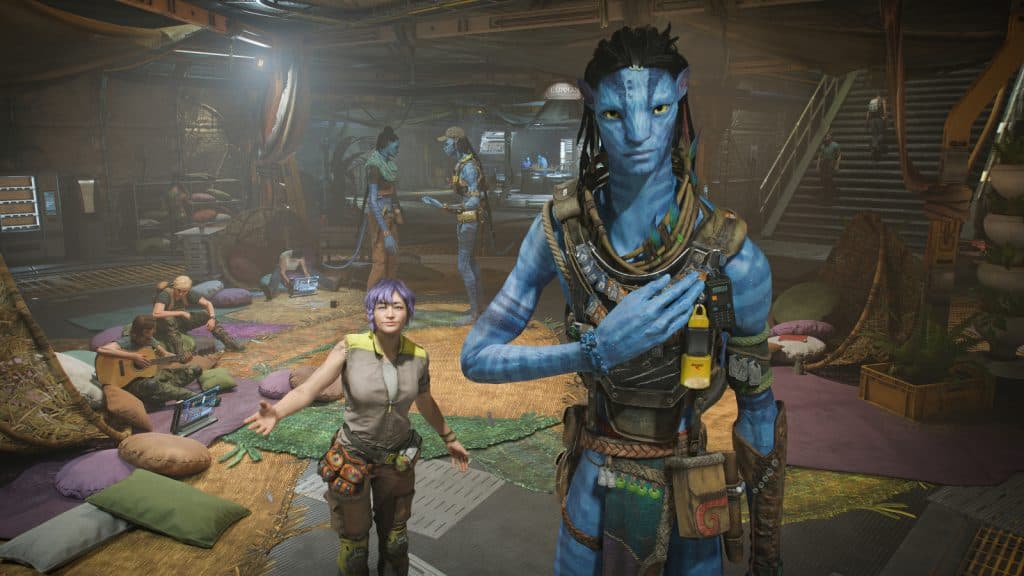 Ubisoft
UbisoftAvatar: Frontiers of Pandora has you step into the shoes of a Na’vi, thus not taking advantage of the titular avatars like the one Jake Sully uses. As things start, you’re in a precarious situation. You’re part of a school of Na’vi children who’ve been taken from their own culture, and taught by humans, in order to make you ambassadors between the two species.
However, due to you being part of an RDA program, the ultra-bad industrialist company that wants to tear Pandora apart for every last profit, you’re not exactly in well-meaning hands. Things are kicked into overdrive as the RDA has to pull out of Pandora thanks to the events of the first film. During this hasty evacuation, you and the other children end up cryofrozen.
You then wake up years later, with the RDA having returned and you being taken in by a resistance force that quickly realizes it’s going to need the help of the clans in the immediate area to repel the invaders. You’re then thrust into the world and sent on your way.
It’s a far cry
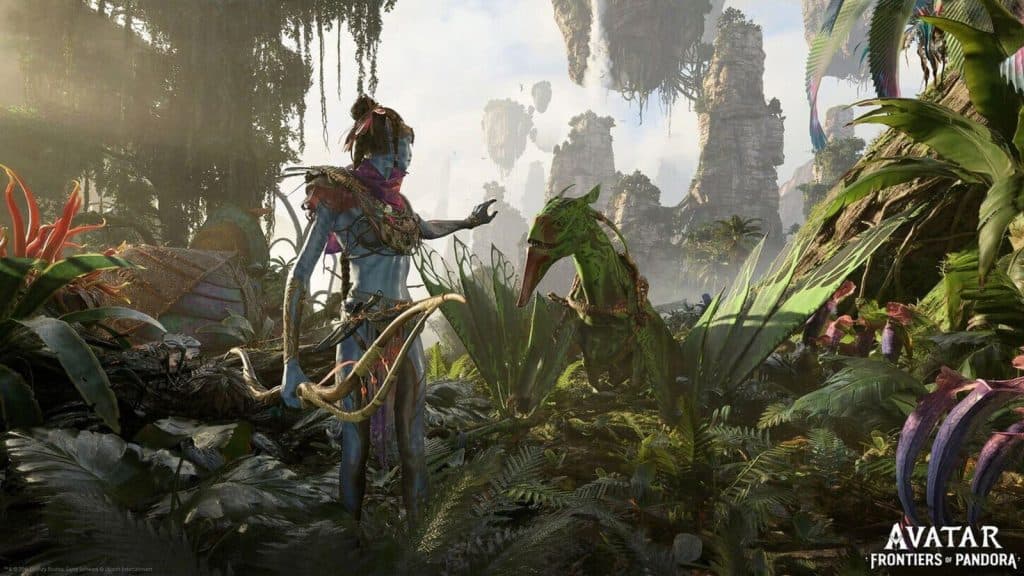 Ubisoft
UbisoftIn terms of what the game plays like, Far Cry is a good starting point for visualizing Frontiers of Pandora. So much so that it’s been jokingly referred to as Far Cry: Pandora, a play on Far Cry: Primal, since it was announced. It’s not hard to see why either. Avatar: Frontiers of Pandora has you in first person in an exotic location, and you, at times, clear camps of enemies. Ubisoft also has a bad habit of homogenizing features across its IP, such as the aforementioned camps you can liberate, or radio towers to climb to clear the fog of a map.
However, Far Cry is only useful as a starting point – a skeleton. This game’s goals and key input into the world are completely different from Far Cry. Hell, it even runs antithetical to most AAA games, especially FPS. In most, violence is the main way you interact with the world. You only generally have one moment-to-moment tool – a weapon.
Avatar: Frontiers of Pandora has different goals. Especially in the first half of the game, I found that surprisingly little of my time was spent fighting the RDA. Instead, it’s far more interested in having you explore and interact with the world more helpfully. There’s a strong emphasis on having you run around, looking for resources, and using what you find in the land to better your goals.
There’s a mode called Exploration that’s worth trying that elevates this concept. This encourages you with clues and compass directions on the map, rather than just giving you a waypoint to go to. I spent much of my early time in Pandora this way and I can’t recommend it enough.
In the films, while the big battles happen, especially towards the back half, much of the earlier portions are dedicated to immersing yourself into Pandora. It’s more a celebration of the nature, wildlife, and culture of the Na’vi inhabiting this world.
That transfers over to Frontiers of Pandora, which is what I mean when I say it understands the franchise. It’s not a video game first and Avatar second, it’s Avatar first and a video game second.
Some might not gel with that. This isn’t going to be for everyone. If the thought of getting lost in a jungle for 45 minutes while you track down a specific honeycomb you need from the swamp doesn’t sound up your alley, you might yearn for more action earlier on. However, if you buy into this, there’s something unique, even joyful about the game’s earlier portions.
Pandora the explorer
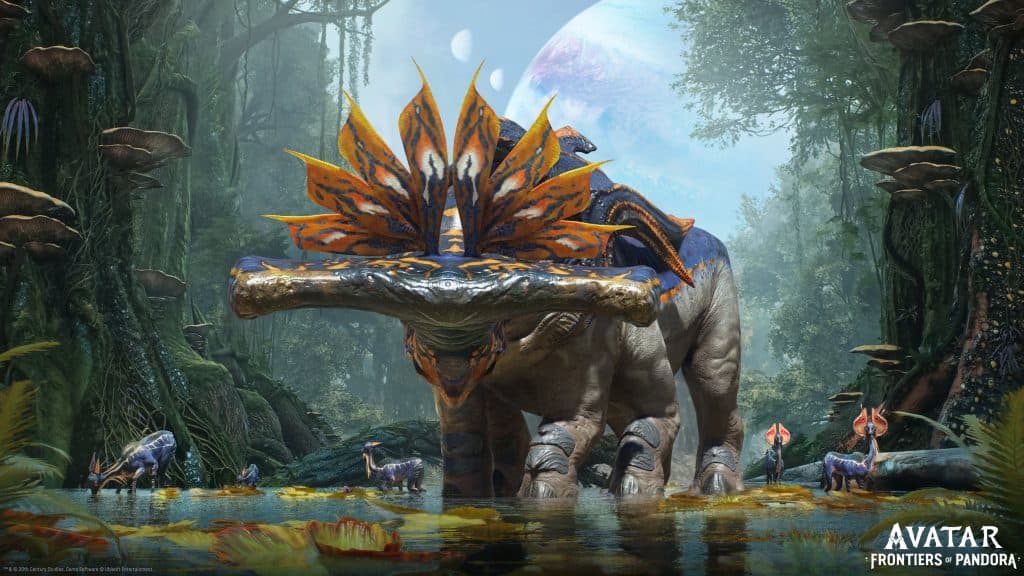 The wildlife is something to behold
The wildlife is something to beholdThis focus on exploration wouldn’t work unless the world of Pandora was expertly realized. However, Massive Entertainment not only did their homework but worked closely with the custodians of the Avatar franchise to nail this.
The game is set on the Western Frontier, a different continent from that of the movies. This gives it room to explore its own story largely untouched by the goings-on of the films. It still very much feels like the same world though, and it’s obvious an inordinate amount of work has gone into nailing that feeling.
This is the first time Pandora has been realized as a whole, and seeing a huge section of the moon as one continuous space is a joy for any fan. The setting of Avatar is as important as any goings-on with the characters throughout the franchise. Frontiers of Pandora nails this and its locations are put together with such dense detail, that it’s a genuine joy to get lost in. It also expands the possible biomes into things outside the jungle and ocean settings captured in the films, but in ways that feel wholly additive, rather than shoe-horned in for the sake of scenery diversity.
This is to say nothing about how beautiful it all is too. At times, when you’re flying on your Ikran, there’s nothing but the vast, unexplored landscape, mysterious rock formations, and floating mountains. It’s in these moments you realize just how well Massive Entertainment has nailed this realization of Pandora.
If there is a Hell, you might wanna go there for some R&R
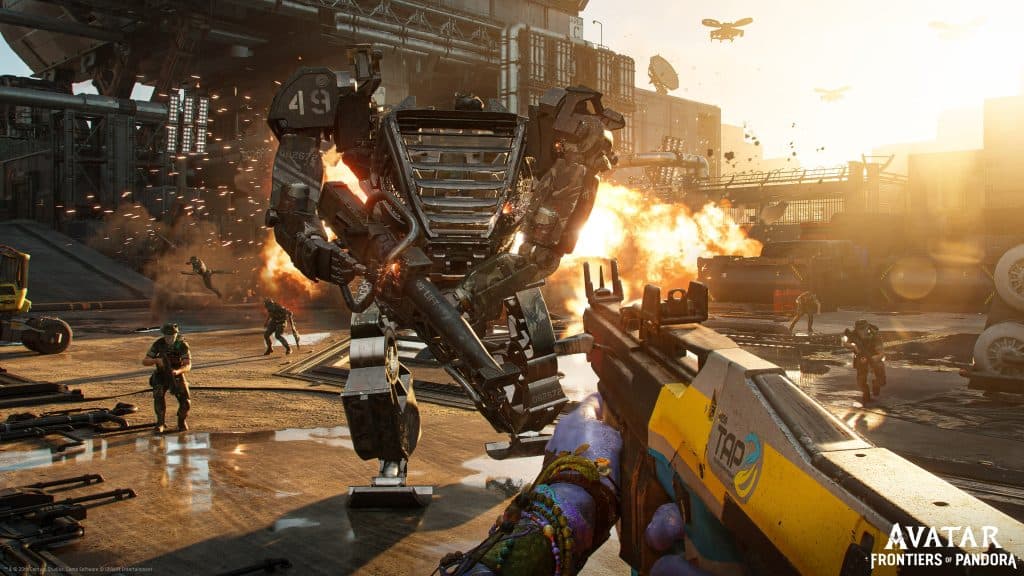 The RDA continue to bring bigger and bigger guns to fights.
The RDA continue to bring bigger and bigger guns to fights.While exploration and helping various Na’vi clans make up the vast majority of the earlier parts of the game, in typical Avatar fashion, the rising tensions with the RDA eventually give way to combat.
The combat is largely decent. There’s a good variety of weapons available here, many of them various bows. Long, Heavy, and Shortbows all serve different functions, while spear throwers and classic human machine guns offer different engagement styles. Obviously, though, it’s very bow-heavy, which can feel a little samey after a while.
As the game’s difficulty ramps up, the enemies can become quite spongey, especially as power suits start getting armor added to them. This generally means you have to rely on stealth the longer you go into the game.
The issue is it can be easy to get yourself into a bit of a bind, and killed pretty quickly, especially if you don’t have safe spots to retreat to. The movement thankfully is forgiving with long combat slides and very generous mantling making this easier. However, it’s not rare to try and infiltrate an RDA base, spend 10 minutes stealth killing enemies, only to get spotted, have three or four power suits corner and kill you and you have to approach it all again.
Cooking and eating meals with powerful ingredients you forage for throughout the game can help. You can get worthwhile bonuses, especially if you came to a fight prepared, ready with your meat-skewers that will give you enhanced damage – but they only help so far. I never actively disliked the combat, but as the amount increased towards the game’s conclusion, I did begin to feel the limitations. Again though, thankfully, this isn’t your main focus for most of the run time, and Avatar: Frontiers of Pandora knows its strengths lie elsewhere.
An adaption that gets it
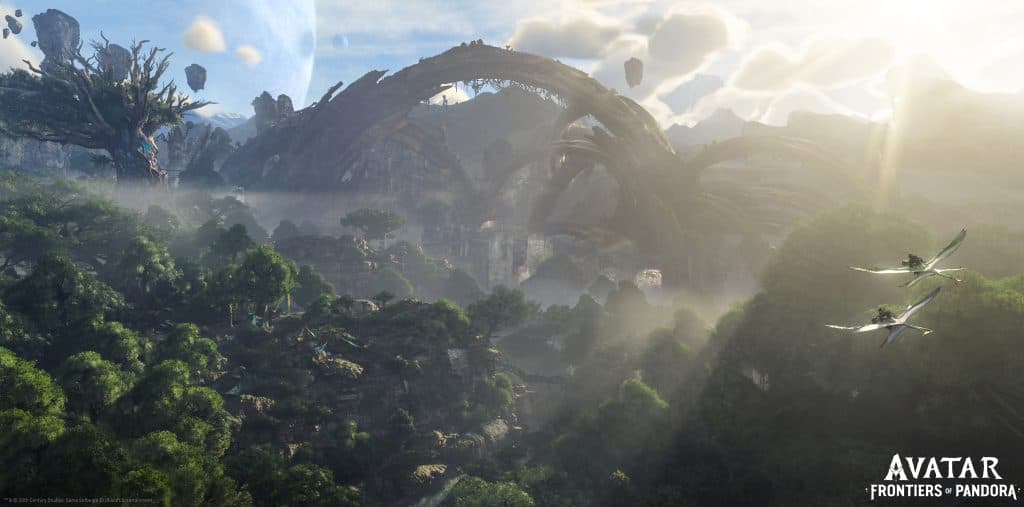 Pandora is worth getting lost in.
Pandora is worth getting lost in.To get the most out of Frontiers of Pandora, and really, the franchise as a whole, you need to buy into its earnestness. It’s easy to be cynical about Avatar as by its very nature it’s one of the smultziest franchises out there. But, if you give yourself over, it does give back.
It’s fairly black and white – the good guys are obviously good, the bad guys are obviously bad, and its themes and messages about our world are tough to even consider subtext. It’s an obvious allegory about indigenous cultures and human devastation of the natural world. There’s not a lot of nuance to misinterpret. It’s one-dimensional, and you have to embrace that spirit if you’re going to get anything back. This is all especially true of the game.
As you become acquainted with Pandora, there comes a point where it all just feels, nice. This weaving of an expertly realized world, with the exploration and positive nature of helping others has this unique sincerity to it that you don’t often find in AAA shooters. This is what I mean when I say Frontiers of Pandora feels more like Avatar than a video game. What may have started as a Far Cry clone, feels warped by the franchise into something that feels different enough to make it interesting.
Some stellar sequences highlight this. When you’re finally tasked with climbing an Ikran rookery, platforming your way up floating mountains to finally get your flying mount is one such instance. Then once you finally do, the first flight is something to behold. There’s also the first time you get to ride a direhorse across a stunning vista – it’s in these moments Frontiers of Pandora feels genuinely joyful.
This all feeds into the overall story too. You begin to feel the RDA’s encroachment as it makes you deeply aware of what you’re at stake of losing. Due to the quality of the world, and the goals of the game, it’s easy to get invested in the story and characters. As the stakes got higher, the fights got tenser, and I realized I was leaning closer to the screen. I turned the volume up to have the atmosphere and stellar soundtrack wash over me. I was in those moments. That’s always a great sign that something is working at the core of a game. The vibes, as they say, are immaculate.
A single thing worth fighting for
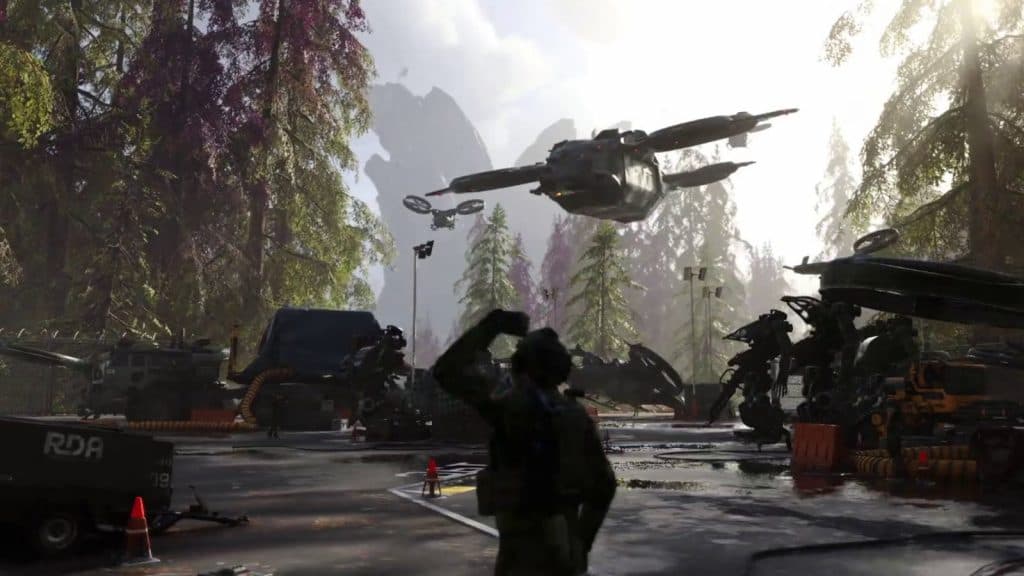 Ubisoft
UbisoftThat all said, the game doesn’t quite stick the landing. The RDA’s pursuits of being unreasonably evil, to the point where it doesn’t make sense, can threaten to drag things down. When you see the villain in front of you, acting villainly, they lose mystique via their two-dimensional nature. However, when you don’t see them pushing big red buttons, they become far more menacing. Frontiers of Pandora does not hold its punches, and when it wants to be, it can be pretty grave.
For the most part, the evil of the RDA is largely faceless. You don’t see the big villain twirling the metaphorical mustache. Instead, you only see the consequence of their callous actions. You’re left with the consequences, the devastation to Pandora and its people.
In the final third of the game, the joy and exploration begin to be chipped away, and the themes Frontiers of Pandora wants to engage with become starkly clear. It is not always comfortable viewing either. Once it finally wrestles with the trauma of its opening premise, an invading force coming to steal children from a people to reteach and reassimilate them to slowly erase their culture, understandably things get heavy. There’s a harrowing run toward the back half of the game that can be tough to stomach.
This isn’t subtextual either. This is very clearly the thematic heart of the game’s narrative, and it forces you to wrestle with some stark events. It’s impossible to say how this will land on you – you might find it a little overly serious for an Avatar game, or you may think it wields trauma too freely, but I’d be lying if I did not find it affecting.
I see you
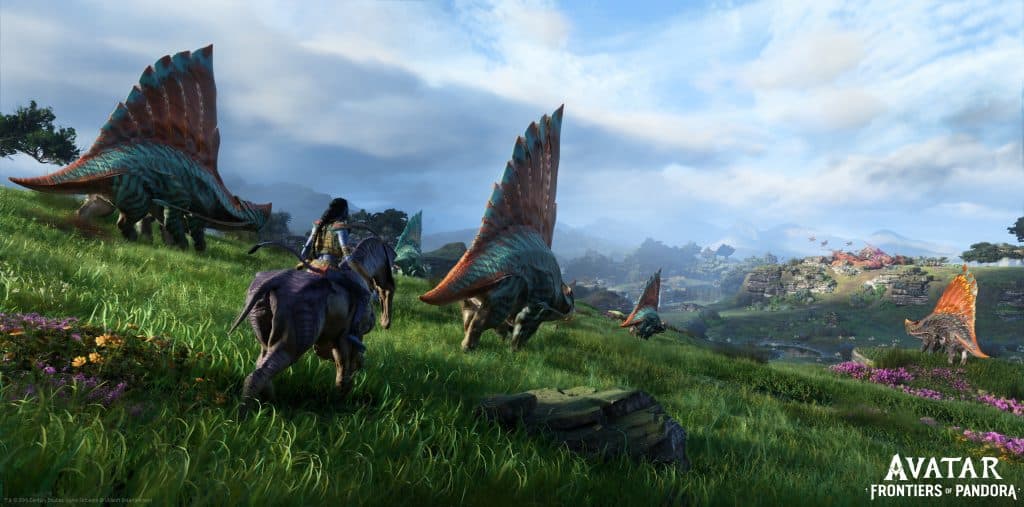 Avatar: Frontiers of Pandora is a beautiful game.
Avatar: Frontiers of Pandora is a beautiful game.Avatar: Frontiers of Pandora, much like the film series, will likely be quite divisive. Its heavy exploration focus might not work for everyone, and the sheer earnest, allegorical nature of the franchise might drive some away.
There are undeniable shortcomings too. The combat can be a little stiff, and it doesn’t quite nail its ending, as the game runs out of juice in the final missions. Some portions feel compromised too – like big battles that happen off-screen so the game only has to render a couple of NPCs, rather than hundreds. There’s also an ever-present microtransaction economy for cosmetics shoved right into the main and pause menu.
Verdict – 4/5
However, all that aside, Avatar: Frontiers of Pandora is an exceptional realization of this franchise. Its spirit feels pitch-perfect, walking completely in step with James Cameron’s films. It understands Avatar and its appeal and lets it be led by that rather than typical FPS and Ubisoft tropes. Its highs soar, while also taking on some harrowing themes too. It may not work for everyone, but it’s a delight for any Avatar enjoyer and one of the best games based on a film IP ever made.
If you click on a product link on this page we may earn a small affiliate commission.